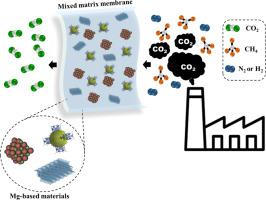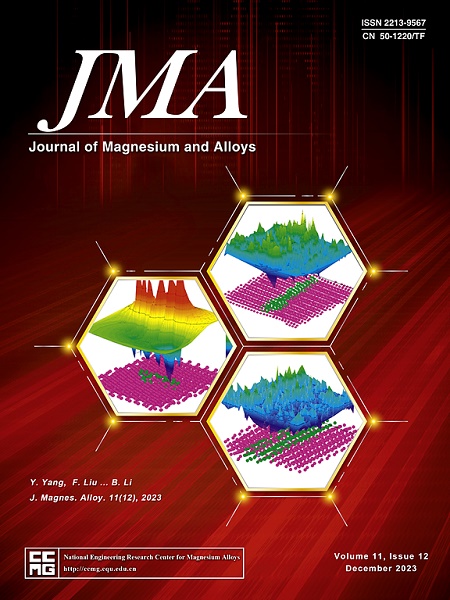A comprehensive review on Mg-based materials as filler in mixed matrix membranes for CO2 separation
IF 15.8
1区 材料科学
Q1 METALLURGY & METALLURGICAL ENGINEERING
引用次数: 0
Abstract
The crisis of excessive increase in CO2 emissions has quickly become a serious issue and requires low-cost and bio-compatible solutions. The employee of membrane technology for CO2 gas separation has garnered significant interest among researchers. However, this method encounters challenges related to selectivity and permeability. Therefore, modifying and reinforcing the polymer membranes to improve gas separation performance seems essential. Among the various methods for polymer membrane modification, modification with magnesium-based fillers to prepare a mixed matrix membrane (MMM) is considered an efficient method. Owing to magnesium metal's low weight, low density, high strength, and good selectivity, magnesium-based materials (Mg-based materials) have more porosity, higher available surface area, more adsorption sites, lighter weight, and more gas absorption tendency than other fillers, which makes them an attractive choice for the preparation of gas separation MMMs. This research deals with the introduction of Mg-based materials, various methods of synthesis of Mg-based materials, different methods of introducing Mg-based materials into the membrane matrix, and their effect on the performance of MMMs in CO2 gas separation applications. Therefore, this review can provide researchers with light horizons in using the high potential of Mg-based materials as efficient fillers in MMMs to achieve excellent permeability and selectivity and generally improve their performance in CO2 gas separation applications.

求助全文
约1分钟内获得全文
求助全文
来源期刊

Journal of Magnesium and Alloys
Engineering-Mechanics of Materials
CiteScore
20.20
自引率
14.80%
发文量
52
审稿时长
59 days
期刊介绍:
The Journal of Magnesium and Alloys serves as a global platform for both theoretical and experimental studies in magnesium science and engineering. It welcomes submissions investigating various scientific and engineering factors impacting the metallurgy, processing, microstructure, properties, and applications of magnesium and alloys. The journal covers all aspects of magnesium and alloy research, including raw materials, alloy casting, extrusion and deformation, corrosion and surface treatment, joining and machining, simulation and modeling, microstructure evolution and mechanical properties, new alloy development, magnesium-based composites, bio-materials and energy materials, applications, and recycling.
 求助内容:
求助内容: 应助结果提醒方式:
应助结果提醒方式:


